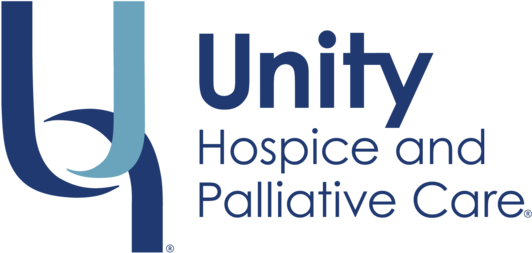BLOG

What are the Four Levels of Hospice Care?
Hospice care, intended for a person with a terminal illness who has a prognosis of six months or less to live if the illness runs its natural course, is most frequently provided in the patient’s home. While the hospice benefit allows patients and their families to stay together in the familiar surroundings of home with only routine home care needed to control symptoms, there may be times when that is not enough. To ensure patients remain as comfortable as possible and at ease throughout their time in hospice, four levels of care have been established by Medicare.1,2 These allow the hospice team to respond to urgent and changing needs quickly. The appropriate level of care is offered to manage symptoms such as pain or to provide respite for caregivers. Unity Hospice and Palliative Care is skilled at offering patients excellent care at all four of these levels.

1. Routine Home Care
This level is used most often and covers a wide range of services3 given to help keep the patient’s condition stable and symptoms well controlled. Routine Home Care can be provided in the patient’s home, at an assisted living facility, or in a skilled nursing setting.
Routine home care includes:
- Physical assessment: review symptoms, adjust medications as indicated to maximize patient comfort, and consider the patient’s and caregivers’ overall psychological and spiritual well-being.
- Environmental assessment: ensure the patient’s living space is safe with good lighting and uncluttered hallways. Provide equipment to enhance safety, such as a hospital bed.
- Family assessment: evaluate how family caregivers are coping. This is essential in routine home care to ensure the primary caregiver receives the necessary support.
- Based on assessed needs hospice will provide:
- Physician, nursing and nurses aid care
- Medical supplies (e.g. bandages, catheters)
- Medications to manage symptoms or pain
- Hospice aide
- Physical and occupational therapy
- Social worker services
- Dietary counseling and support
- Spiritual and grief counseling for patients and their families, and bereavement support for the family
- Speech therapy (e.g. swallowing difficulties)
- Hospice support on call 24/7, with visits provided for assessed needs
2. Continuous Home Care
This level, more intense than routine home care, is given during brief periods of crisis to manage a hospice patient’s acute symptoms while remaining at home. To qualify for continuous home care, the patient must need skilled care for at least eight hours a day, with 50% or more of the care delivered by a registered nurse, licensed practical nurse, or licensed vocational nurse. For example, if the patient’s pain is not controlled and requires frequent evaluations and intravenous medication to manage it properly, continuous home care will be recommended and arranged by the hospice team.
Symptoms that may require continuous home care include:
- Uncontrolled pain
- Persistent, severe nausea and vomiting
- Acute respiratory distress syndrome
- “Terminal restlessness” – agitation, aggressive behavior that can occur during a patient’s final days
- Seizures
When the patient’s condition is stable, they return to routine home care. However, if the patient’s condition cannot be stabilized at home, the hospice team may recommend stepping up to the next level – general inpatient care.


3. General Inpatient Care
This is a crisis-like level of care to manage severe pain or symptoms, as described above, that can’t be controlled in the home environment. Instead, care is provided in a hospital or skilled nursing facility and is meant to be temporary. Once symptoms have been controlled, the patient will return home. Note that patients must meet specific criteria to be eligible for general inpatient care; it is not offered as a remedy for unsafe living conditions, lack of a caregiver, or caregiver respite.
4. Respite Care
The hospice team can arrange this level of temporary care to provide much-needed relief to the patient’s primary caregiver. It can be used more than once for a maximum of five consecutive days. The patient is cared for in a Medicare-approved facility, such as an inpatient hospice or skilled nursing facility.
Patients may require all four levels of care during their end-of-life journey or remain on routine home care, depending on their needs and preferences.4 The physician and hospice team guide the patient and their family to ensure the right level of care is provided at the appropriate time.

For more than 30 years, family-owned Unity Hospice and Palliative Care has partnered with hospitals, clinics, skilled nursing facilities, and the community to provide hospice and palliative care services at every level. To learn more about how Unity can help your patients and their families, please contact us:
888-618-6489 info@unityhospice.com